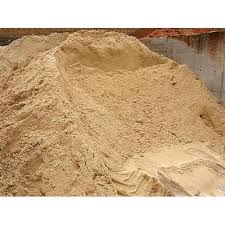
In late 2008 I was tasked by the then Chief Minister of the industrial state of Selangor of Malaysia, in which Kuala Lumpur, the capital of Malaysia is also located, to re-organize the state’s sand industry. The sand industry has been rife with illegal sand extraction and corrupt officials. The state collected only a small amount of royalty from its sand resources.
The demand for sand was huge as it is an important material for building and road construction. Anjana Ahuja wrote in Financial Times on 23rd, May 2019, that, according to a UN report, sand is being mined, dredged and even stolen to satisfy the global demand for infrastructure. Strikingly, sand comes second only to water in terms of the volume of material resources that are extracted and traded globally.
While it is being poured into much-needed urban development, particularly in China and India, sand is not a limitless gift of nature. The world has a “sand budget” and we are spending it faster than it can be replenished.
The environmental consequences of sand extraction are becoming plainer by the day. The plunder of lakes, rivers and coastal areas reduce biodiversity, destroying fishing communities, causes pollution, lowers water table and, by ferrying away natural deposits increases flood risk.
It can also threaten tourism in countries like Morocco with illegal extraction providing half of the annual sand needs, beaches are in danger of being stripped back to rock.
“It is a challenge to the paradigm of infinite sand resources,” concludes the UN report.
We tend to think sand as the powdery stuff that slips between our toes. In fact, sand falls into two categories. The first is mineral sand, which contains such minerals as zircon and is used to make ceramics and as pigments. It comes mainly from river beds and coastal areas like beaches. In inland and non-tropical areas, sand is mostly made of silica, or silicon dioxide. The second class is aggregates, a generic term for crushed rock, sand and gravel. This easier-to-bind coarse variety of sand is coveted by the construction industry. Up to 50 million tonnes are removed from rivers, pits, quarries, coast lines and marine areas each year.
Illegal or unregulated sand extraction flourishes in countries where, variously, rules are lacking, enforcement is lax or corruption thrives. Because transporting sand is expensive, generally the material is generally used near to its source. Tracking where infrastructure is springing up can yield clues about which ecosystems might be targeted. According to Dr Latham of the Imperial College in London, UK, the great sand drain presents a technical challenge: how to come up with alternative materials, perhaps using desert sand. “It is a huge reserve that is already on land, so removing it arguably less of an environmental problem. The industry needs to look at this.”
An Imperial College student start-up is trying to develop a building material out of smooth –grained sand; the re-usable, biodegradable composite is currently only suitable for temporary structures.
Sand is becoming a geopolitical irritant too. Singapore’s expansion via land reclamation has been linked to the loss of 24 sand islands from neighbouring Indonesia. China’s territorial expansion in the South China Sea depends on imported sand.
My Own Experience
There is a veracious demand for sand in our state of Selangor and in Kuala Lumpur for construction of roads and infrastructure. Sand extraction from agricultural lands, ex-mining lands and river turned them into large water bodies with few alternative uses. Declining supply of sand from the state of Selangor requires sand to be transported from other states such as Perak in the north. Large trucks are used to transport sand, which often cause busy traffic on the highways. Illegal sand activities have been vastly reduced, and the income from the sand royalties for the state of Selangor had increased substantially.
But everyone must know that sand is a limited resource and may not be available where it is needed for urban development. Society needs to prepare to pay a higher price for this take-for-granted natural resource.